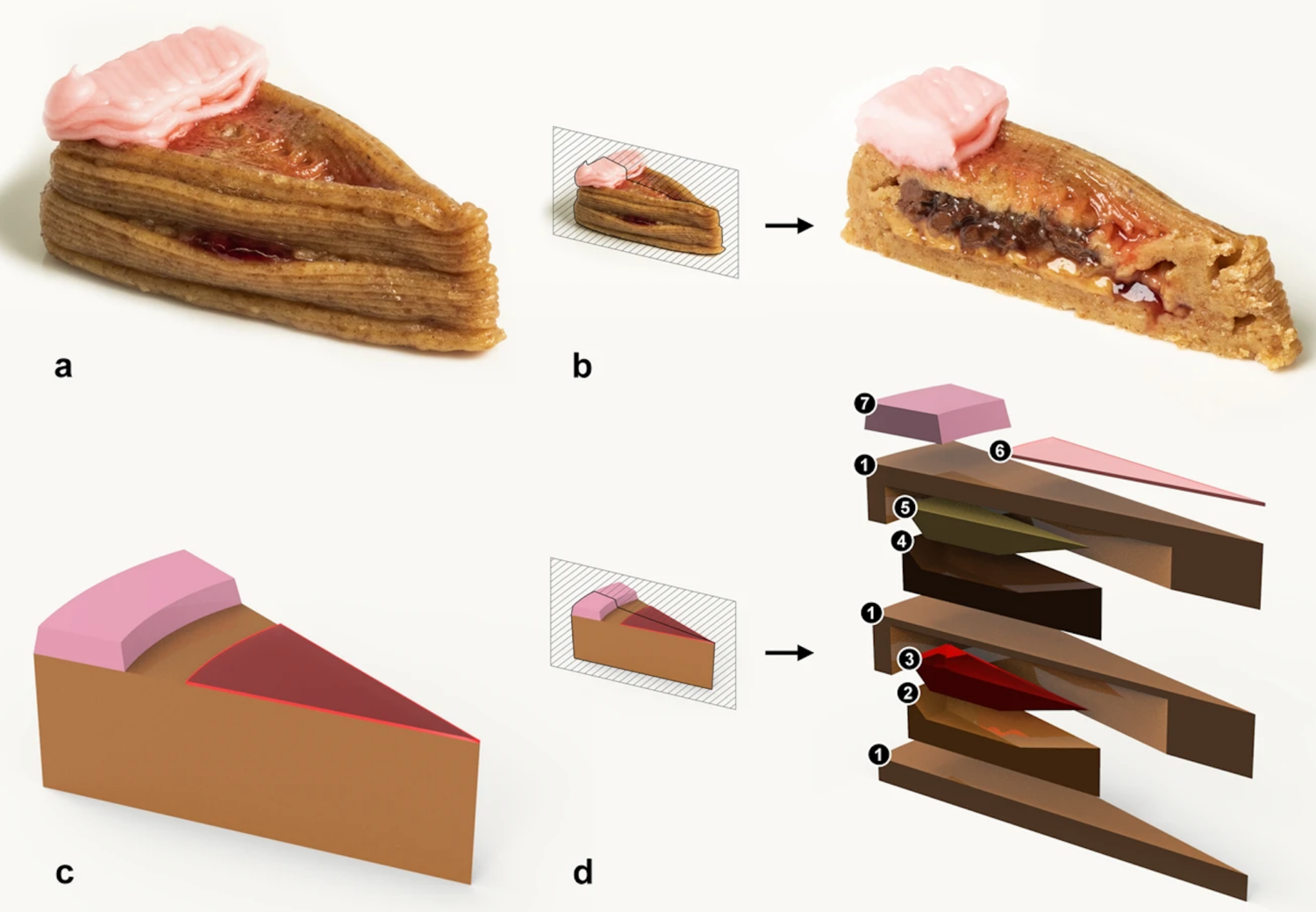You’ve likely heard of 3D printing for things like medical devices, homes or this bridge in Amsterdam — but did you know you can also print real-life, edible food?
Researchers at Columbia University have successfully created a seven-ingredient slice of edible cheesecake using a 3D printer and share the results of their study, published in NPJ Science and Food journal.
To make the cheesecake, which was peanut butter-banana flavored with a cherry drizzle, the researchers converted all the ingredients into paste-like substances. While the peanut butter, Nutella, frosting and cherry drizzle did not require additional prep, the bananas had to be mashed, and the graham crackers were combined with butter and water to create a paste.
The ingredients were then printed in layers into the shape of a slice of cheesecake, with the construction becoming similar to a home with “floors, walls and ceilings being the foundation (graham cracker) and inner pools (Nutella and peanut butter) holding softer ingredients within (banana and jelly),” the researchers wrote.

The researchers admit that because there is a growing shift among consumers away from processed and more toward whole foods, 3D food printing may seem off-putting to some. They point out in a press release about this experiement, however, that printing food has several benefits for those who might need “personalized nutrition,” like allowing cooks to control the nutrient content in a meal, offering more customized meals and helping those with medical issues.
“We also see other important uses for 3D food printing, including creating alternatives to bland, unattractive pureed foods for those with swallowing and other digestive disorders,” they said in the journal. “Bringing new textures and shapes to food can enliven its attractiveness while allowing for production on a large scale in a factory or foodservice kitchen setting in hospitals and other operations.”
Want to see how they did it? Columbia shared a YouTube video from the engineers that shows the process:
Believe it or not, the cheesecake is actually not the first time a 3D printer has been used to create food. The researchers say other items have included pizza, pasta and plant-based meat.
This story originally appeared on Simplemost. Check out Simplemost for additional stories.


